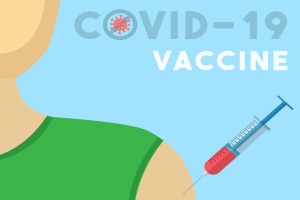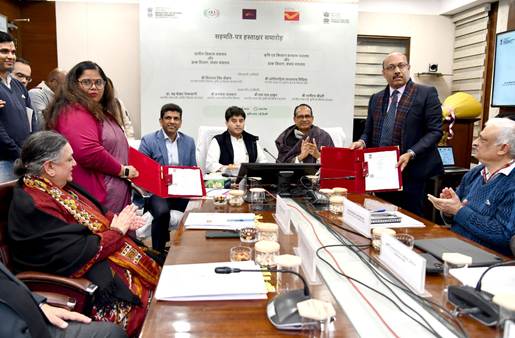
COVID-19 Notes
 By Dr. Satish K Gupta*
By Dr. Satish K Gupta*
The first human challenge study of Sars CoV-2 was carried out in collaboration with the Imperial College London, and the Royal Free London NHS Foundation Trust. The trial was done for the first time to monitor people through the entire course of infection and provide insights into the timeline of the infection.
How was the trial done?
Researchers selected 30 adults aged 18 to 29 years who were seronegative unvaccinated. All participants were inoculated with a standard dose of the virus by intranasal drops {10 TCID50 of SARS-CoV- 2/human/GBR/484861/2020, a D614G-containing pre-alpha wild-type virus)
Results and possible implications
1. Eighteen out of 28 participants subsequently developed RTPCR-confirmed infection. Please note that not all the subjects developed infection despite direct nasal inoculation of the live virus. Reasons could be the dose limitation of inoculum or many other factors like past immunity conferred from infection by a related human coronavirus. The finding may have a public health implication in deciding the duration of quarantine following exposure to healthy individuals. As per the study quarantine of 5 days may be deemed sufficient for most of the healthy contacts.
2. Mild-to-moderate symptoms were seen in 16 out of 18 (89%) infected individuals, beginning 2-4 days post-inoculation. These findings suggest a short incubation period of approximately 2 to3 days as against the wide belief of an average of 5 days of incubation.
3. Among infected, viral load (VL) was seen rising steeply and peaking at ~5 days post-inoculation. The virus was first detected in the throat but rose to significantly higher levels in the nose. Early after infection VL was higher in the throat than nose. All symptoms were mild-to-moderate, with peak symptoms at 5 days (at 112 hours post-inoculation) aligning closely with peak viral load in the nose, which was significantly later than peak VL in the throat. The finding may have implications in testing patients suggesting that the highest positivity can be achieved when testing is advised 5 days post-exposure.
4. Symptoms were most frequent in the upper respiratory tract and included nasal stuffiness, rhinitis, sneezing and sore throat. Systemic symptoms of headache, muscle/joint aches, malaise and feverishness were also recorded. No quantitative correlation was noted between viral load and symptoms, with high VLs even in asymptomatic infection. Among those who developed symptoms, neither local nor systemic symptom severity was related to detectable VLs suggesting futility of CT value (being reported with most RT PCR reports) as a prognostic guide to disease progression.
5. Even early Remdesivir did not decrease symptoms! Among seven infected subjects, Injection Remdesivir was administered at 200 mg once daily for 5 days as early as possible after the second consecutive quantifiable viral detection from the nose and/or throat swab. There was no difference in symptoms between Remdesivir treated and untreated individuals raising questions about the utility of the drug in patients of mild Covid-19 the finding is in line with the solidarity trial.
6. Anosmia/dysosmia developed more gradually in 12 (67%) participants. While other symptoms peaked with nasal VLs, the nadir of UPSIT scores was 6-7 days later {University of Pennsylvania Smell Identification Tests (UPSITs)}. Complete smell loss (anosmia) occurred in 9 individuals (50%), but most experienced rapid improvement before day 28. Only one individual still had measurable smell impairment at 180 days post-inoculation. Anosmia is therefore a common feature of human SARS-CoV-2 challenge that generally onsets several days later than viral shedding and resolves quickly in most individuals.
7. Viable virus was recoverable from the nose up to ~10 days post-inoculation, on average. Hence, the duration of isolation should be at least 10 days after the onset of symptoms.
8. Following the SARS-CoV-2 human challenge, viral shedding begins within 2 days of exposure, rapidly reaching high levels with viable virus detectable up to 12 days post-inoculation, and significantly higher VL in the nose than the throat despite its later onset. The findings have public health significance. The high viral shedding from the nose underlines the need to wear well-fitting three-layered face masks that cover the nose and the mouth.
9. Development of Antibodies
– No increase in neutralising antibodies or anti-spike protein antibodies IgG was observed in those deemed uninfected.
– In contrast, serum antibodies were generated in all infected participants with neutralising antibody titres of 425 (median, IQR 269) at 14 days post-inoculation and a further rise to 863.5 (IQR 403) at 28 days.
– A slower rise was seen in spike protein-binding IgG measured by ELISA, with a median increase to 192.5 (IQR 393.1) ELU/mL at day 14 followed by an increment by day 28 to 1549 (IQR 1865) ELU/mL.
The study raises concerns about the possible success of nasal vaccines. Keeping in view that even live virus was not able to trigger antibody formation in nearly half of the subjects, scientists need to tweak the dose as well as technique to thwart possible inhibitory mechanisms
10. Lateral Flow Assay (LFA) or Rapid Antigen test.
From ~4 days post-inoculation, LFA demonstrated high sensitivity as a surrogate for qPCR or FFA-positivity. Overall, LFA was highly specific. Rapid Ag Test positivity is strongly associated with the culturable virus and therefore contagiousness. The Point of Care Test can be highly effective as a trigger for interventions to interrupt transmission.
Is it a first of a kind human virus challenge study?
While human infection challenge has been attempted during previous pandemics (but none have been successfully established), however, no reports of deliberate Coronavirus (including SARS-CoV-2) human challenge are known.
How does such a study help further to know about disease or virus?
It enables the exact longitudinal measurement of viral kinetics, immunological responses, transmission dynamics and duration of infectious shedding after a fixed dose of well-characterised virus.
The unique strengths of the SARS-CoV-2 human challenge are its ability to standardise the viral inoculum, study conditions and exact timing of exposure, thus controlling for factors that unavoidably confound natural infection studies. This contrasts with even the most well-controlled field trials, including household contact studies. There, the viral quasi-species, inoculum dose, timing and conditions of exposure are unknown, and contacts are only identified following diagnosis of the index case, at which time secondary exposure has almost always already occurred, thus missing the early phase of infection. SARS-CoV-2 human challenge studies, therefore, fill a gap in the understanding of early factors involved in susceptibility to infection that cannot be addressed in other ways
Is it ethical to conduct such trials risking the lives of young human beings for sake of minute chronological parameters?
The trial has been conducted midway during the course of the pandemic when a lot of experience and knowledge has been gained about the virus and the disease.
Deliberate human infection of low-risk young volunteers could be undertaken under controlled conditions. Though experimental challenge with human pathogens requires careful ethical scrutiny and regulation but can deliver unparalleled information that can inform clinical policy decisions. Such a study needs to balance scientific and public health benefits with ensuring any risks to study participants.
The inherent weaknesses of study
The trial was done during the second wave of the pandemic when the Alpha variant was prevalent so results may vary for newer variants. Also, the trial was conducted on young patients, other age groups may behave differently in face of viral challenge.
This preprint of the study is under consideration at a Nature Portfolio Journal. Journals publishing them need to think twice. Such studies should in no way be glorified to discourage future participants and researchers.
Also read: Omicron’s new sibling BA.2 – Cunning but kind?
*Dr. Satish K Gupta is an MD in Medicines, a Visiting Senior Consultant Physician and Internist at Max Super Speciality Hospital, and a Clinical Assistant Professor at GS Medical College, Chaudhary Charan Singh University, Meerut. He is the author of Journey of COVID in India: A Doctor’s Perspective.





